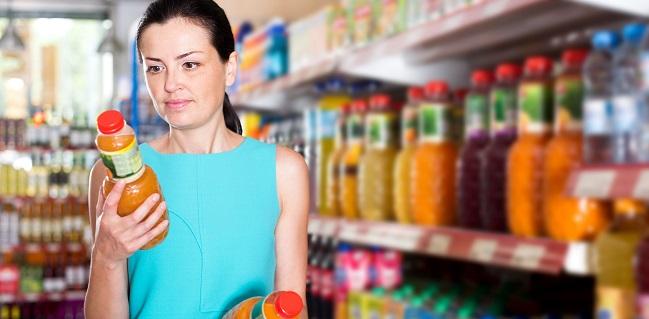New Added Sugar Labeling Could Cut CVD, Spur $31 Billion in Healthcare Savings
In addition to reducing cardiometabolic disease, new policies may prompt industry to reformulate sugary products, an analysis suggests.

Over the next few years, food products and drinks will begin to display information about added sugar on their nutrition labels. While no one knows exactly what will happen as a result of those changes, a new study hints at what the hoped-for reductions in cardiometabolic disease burden could look like, and predicts how significant the savings could be both for the healthcare sector and society more broadly.
While the US Food and Drug Administration has required food manufacturers to include total sugar per serving for years, in 2016 the agency mandated that standard Nutrition Facts labels must also include the amount of added sugar to differentiate it from inherent natural sugars, such as those in fruit. The new data suggest that “healthcare and societal savings as a result of the added sugar label significantly outweigh policy costs, even when an estimated $2.5 billion of industry reformulation costs were considered,” write Yue Huang, MS (Tufts University, Boston, MA), and colleagues in a study published online April 15, 2019, ahead of print in Circulation.
Using a validated simulation model, Huang and colleagues estimated that between 2018 and 2037, there would be 354,400 fewer cases of cardiovascular disease and 599,300 fewer cases of diabetes as a result of the added-sugar policy. The corresponding decrease in net healthcare costs was estimated at more than $31 billion, with societal savings of $61.9 billion. The model assumes a median daily intake of sugar of 37.3 g/day that was projected to decrease even without the added sugar policy by 5.8 g/day. Incorporating the added sugar labeling would add a further decrease of 2.1 g/day.
The largest overall reductions in consumption, according to the simulation, would occur if a manufacturer made a meaningful change to reduce the added sugar content as a result of the new labeling policy.
All of this hinges on people being able to look at the label, understand that label, and then change their behavior. Vasanti Malik
"We need to keep in mind that while these [simulations] are helpful, there are a number of assumptions that go into the model," said Vasanti Malik, ScD (Harvard University, Cambridge, MA), who commented on the study for TCTMD. She noted that similar studies have been used to predict the potential benefits of sugar-sweetened beverage legislation.
The timeline for compliance with the added-sugar labeling has been a major sticking point. Having been pushed back multiple times, it is currently projected to take effect in 2020 for large manufacturers and in 2021 for small manufacturers. The delays have been attributed to wanting to provide the food industry with adequate time for compliance and to minimize the costs to them of making the necessary changes.
To TCTMD, Malik said the new data provide a rationale for implementing the labeling change sooner rather than later.
“What’s the point of delaying the policy if we can see that it would be averting cases of diabetes and be cost savings in terms of healthcare expenditures? We know that the system is so heavily burdened with costs related to diabetes and complications,” she said. “This is certainly making a case for no further delays."
Public Education Needed to Impact Change
But public education about the added-sugar labels is equally important and will likely entail a significant campaign to put the labeling policy into context so that consumers understand what it means for them and for their individual daily sugar intake, Malik said.
Another thing still to be addressed are the connections between the added sugar on the label and subsequent reductions in disease burden. The study by Huang et al based the predicted change in consumer behavior toward added sugar partly on historical studies that looked at the impact of calorie labels on behavior change, but there is no guarantee that added sugar will have the same impact on consumer conscience.
“All of this hinges on people being able to look at the label, understand that label, and then change their behavior,” Malik said. That’s a big unknown, especially since there is no way to be certain that in an effort to avoid the added sugar on the label the consumer will substitute a much healthier choice, she added.
As for manufacturers changing their sugar content in response to the policy, which the study suggests has the greatest chance of impacting behaviors, Malik said that, too, is uncertain.
“What we don't know is: will they reformulate with less sugar and allow consumer palates to adjust to the less-sweet taste, or will they add low-calorie sweeteners to keep the sweetness level up?” she observed. “It’s unpredictable what way that will go.”
L.A. McKeown is a Senior Medical Journalist for TCTMD, the Section Editor of CV Team Forum, and Senior Medical…
Read Full BioSources
Huang Y, Kypridemos C, Liu J, et al. Cost-effectiveness of the US Food and Drug Administration added sugar labeling policy for improving diet and health. Circulation. 2019;Epub ahead of print.
Disclosures
- The study supported by the National Institutes of Health’s National Heart, Lung, and Blood Institute.
- Huang reports no relevant conflicts of interest.
- Malik reports honoraria from the city of San Francisco for consulting related to sugary-drinks tax.


Comments